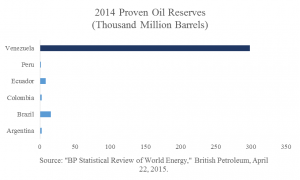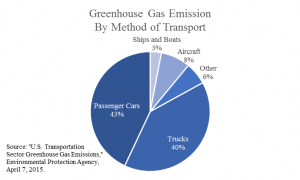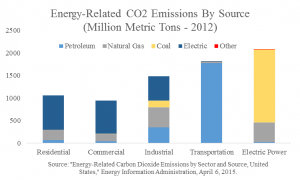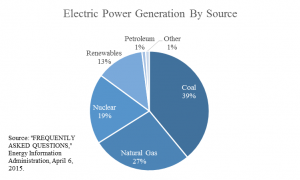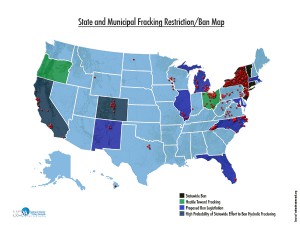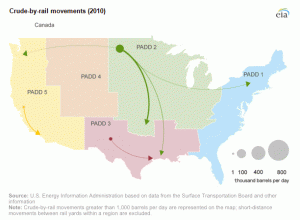Anti-fossil Energy Groups Lobby Students
Universities and other public institutions throughout America are being targeted in an aggressive climate crisis-premised campaign demanding that they divest themselves of all fossil energy investments and influences. In the process, legitimate funding sources are being sacrificed, objective education and science programs are being compromised, and careers of non-conforming researchers are under assault.
As reported by Kimberley Strassel in The Wall Street Journal, one such sponsoring organization, “UnKochMyCampus,” provides a “campus organization guide” on how to “expose and undermine” any college that works against “progressive values.”
Spearheaded by Greenpeace, Forecast the Facts, and the American Federation of Teachers, its website directs students to a list of universities which have received money from Koch foundations. It also offers step-by-step instructions on how “trusted allies and informants” (including other liberal students, faculty and alumni) can be recruited to demand Freedom of Information legislation record disclosures from offending programs and professors.
The Federation of Teachers and National Education Association even sponsored a day-long March conference devoted to training students on “necessary skill to investigate and expose” any Koch influence. Funding influences of left wing contributors, however, are quite a different matter.
It seems quite okay that billionaire environmentalist Tom Steyer and his wife pledged $40 million to create the TomKat Center for Sustainable Energy at Stanford. Steyer, a prominent climate alarmist, anti-Keystone Pipeline lobbyist and carbon tax proponent, also spent $74 million supporting 2014 congressional candidates who would advance his uber-liberal agendas.
A recent National Association of Scholars report titled “Sustainability: Higher Education’s New Fundamentalism” discusses how universities continue to be co-opted as bastions of progressive ideology. Excerpted by Rachelle Peterson and Peter Wood of the Intercollegiate Studies Institute, the movement can be heavily credited to the former senator, now the secretary of state, John Kerry and his wife Teresa Heinz following her previous husband’s fatal 1991 helicopter crash.
Upon meeting at the 1992 Rio de Janeiro U.N. Earth Climate Summit the two recognized colleges and universities as important seedbeds for a new “sustainable development” initiative. This mantra was hatched by the U.N. under its Agenda 21 doctrine and became smuggled into unwitting American townships and counties through its International Council for Local Environmental Initiatives (ICLEI).
In 1992 Kerry and later-to-become wife Heinz launched the nonprofit “Second Nature” with the mission to “create a sustainable society by transforming higher education.” The organization began soliciting professors including ecologists, scientists, philosophers, and poets who were willing to introduce sustainability content into their courses along with encouraging the creation of new centers of sustainability study.
Second Nature’s primary and most successful targets proved to be college presidents who possess an unparalleled ability to shepherd the movement to adulthood along with financial flexibility to experiment with new technologies and programs. A group of 12 institutional heads initially came onboard, including Arizona State University President Michael Crow, and University of Florida President Bernard Machen.
The group pledged to “recognize the scientific consensus that global warming is real and is largely caused by humans” and to set an example by going “carbon-neutral.” Among other things, they also committed to engage in shareholder activism to pressure the corporations in which the college owned stock to move towards climate neutrality. As of last January, 685 colleges and universities have signed on.
Joined by mega-funded green groups, friendly media and government politicos the movement continues to gain fast-paced momentum. A recent Greenpeace-sponsored New York Times attack on Dr. Willie Soon of the Harvard-Smithsonian Center for Astrophysics accused him of personally failing to disclose research funding, even though those monies were properly processed through official institutional agreements.
Two days after the Times article appeared, ranking Democrat on the Natural Resources Committee Rep. Raul Grijalva, D-Ariz., sent letters to university employers of seven researchers identified as climate crisis skeptics. All were asked to provide details about their outside funding sources.
In addition, Senators Barbara Boxer, D-Calif.; Ed Markey, D-Mass.; and Sheldon Whitehouse, D-R.I., attempted to intimidate climate apostates by sending 107 letters to think tanks, trade associations and companies demanding that they provide the same information.
By extension, this presumably suggests that no scientist who ever accepts research funding from any special interest-linked sponsors should be trusted. Let’s remember, however, that government politicians and bureaucrats wishing to expand authority and budgets are as self-interested as anyone, and that nearly all university-based climate research depends upon federal grants they provide.
Those research conclusions, in turn, influence billions of dollars in regulatory and consumer energy costs. There’s little wonder then about the need for alarmist witch-hunting activists following 18 years and counting of flat global temperatures despite rising atmospheric CO2 levels. When the climate scare goes away, so does that power and money.
Another version of this post appeared in Newsmax.

